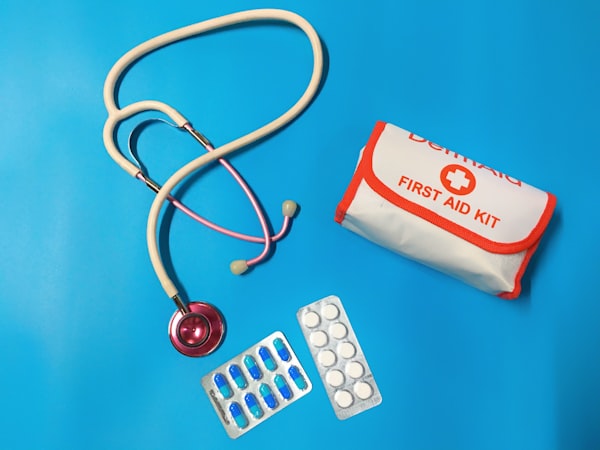What Drugs Are Covered By Medicare Part D?

Medicare Part D is a prescription drug plan that helps seniors pay for their medications. It is run by the government and is available to those aged 65 and over who may not otherwise be able to afford necessary treatments. The program can help cover the costs of both brand-name and generic drugs, making it an invaluable resource for many seniors.
Part D covers a wide range of medications, offering cost savings and peace of mind to those who need them. With this program, seniors in need can access the drugs they require without having to worry about high expenses. While it is important to understand the full scope of drugs covered by Part D, the benefits of this plan cannot be overstated.
Definition of Prescription Drugs Covered By Medicare Part D
Medicare Part D covers many different types of prescription medications. This includes both brand-name and generic medications, certain medical supplies, and vaccines. To receive coverage for these drugs, your doctor will need to file a prescription with your Part D plan.
The drugs that are covered by Part D will vary based on your plan and may include medications for the treatment of chronic conditions like diabetes, high blood pressure, or heart disease. Some plans may also cover certain over-the-counter medications like cold remedies and pain relievers.
It’s important to know which medications are eligible for coverage under Part D as this can help you save money on the cost of your prescriptions. You can find more detailed information about what drugs are covered by your individual plan by talking with your doctor or visiting your Part D provider's website.
List of Covered Drugs
Medicare Part D covers a wide range of prescription medications. These drugs are sorted into different categories and subcategories, making it easy to navigate the coverage options. The list includes brand name medicines, generic drugs, and specialty medications.
In order to know which drugs are covered by Part D, it is important to understand these categorizations. Common drug classes include anticonvulsants, antidepressants, antineoplastics, anti-inflammatories, and more. Here is an overview of the types of drugs that are eligible for coverage:
- Brand Name Pharmaceuticals - These are medications that have been developed and patented by a specific company. They can be expensive compared to generics, but are usually very effective.
- Generics - Generic drugs are the less expensive alternatives to brand name medicines. They are typically just as effective, but slightly less potent.
- Specialty Medications - These are drugs that are used to treat complex or rare medical conditions. They may require a special authorization from insurers in order to be covered.
- Over-the-Counter (OTC) Drugs - OTC drugs are medications that can be purchased without a prescription. They are not usually covered by Part D, but depending on the program certain OTC items may be eligible.
Categories of Drugs Covered
Part D covers a variety of different drugs, sorted into different categories. Here is an overview of the types of medication that are eligible for coverage:
- Brand Name Pharmaceuticals: These are medications produced by major pharmaceutical companies under their own brand name.
- Generics: These are lower-cost medications made with the same active ingredients as their brand-name counterparts, but in different formulas.
- Over-the-Counter Drugs: These are medications that can be purchased without a prescription.
- Vaccines: These drugs help prevent individuals from contracting certain diseases.
- Compounded Drugs: These are medications that are synthesized from two or more active ingredients in order to meet a person's specific medical needs.
What Makes a Drug Eligible for Coverage?
Medicare Part D covers an extensive list of prescription drugs. To understand what makes a specific drug eligible for coverage, it's important to first identify the criteria that must be met. Generally speaking, the medication must be:
- Used to treat a medical condition or illness
- A pill, oral solution, injectable, topical gel, eye drop, or nasal spray
- Sold legally in the U.S.
- Useful in preventing complications from the disease
- Approved by the U.S. Food and Drug Administration (FDA)
Part D only covers drugs that are approved by the FDA, so drugs purchased from out-of-country sources are not eligible for coverage. Additionally, some medications may have age restrictions, require prior authorization, or may even have a limited quantity coverage limit set by Medicare. It's important to review the drug formulary in your plan carefully to determine what you are covered for.
Government Programs that Supplement Part D
Medicare Part D is an invaluable program for seniors who require prescription medications. While Part D covers many drugs, there may be some medications that are not included in the program. Fortunately, there are government programs and supplemental insurance plans, such as Medicaid, that can provide assistance when it comes to purchasing medications.
Medicaid is a federal and state funded program that provides health coverage for those who meet certain requirements and cannot afford medical care. Medicare beneficiaries may be eligible for assistance from Medicaid if their incomes and resources do not meet a certain threshold. Depending on the individual’s state of residence, Medicaid may provide additional coverage for prescription drugs that Part D does not cover.
Supplemental insurance plans, such as Medicare Advantage Plans, may also offer additional coverage for medications that are not covered by Part D. These plans can help cover the cost of medications that may be too expensive for Medicare beneficiaries. Insurance providers offer different plans with varying levels of coverage, so it is important to research the offerings and understand what is included.
The cost of medications can be a major concern for seniors, but there are resources available to help make them more affordable. Knowing what drugs are covered by Part D and understanding how other government programs and supplemental insurance plans can provide assistance is key to finding the best options.
Cost & Benefits of Medicare Part D
Part D comes with premiums, deductibles, and copayments, which are all costs associated with accessing medications through this program. The average premium for prescriptions under Part D is around $30 - 40 per month, depending on the type of coverage and plan chosen. Deductibles are another cost that you may encounter, but this amount can vary widely depending on the type of plan chosen. Copayment fees are fixed amounts paid per prescription and can be up to 25% of the drug’s cost.
Despite the cost of premiums, deductibles, and copays, there are major advantages to using Medicare Part D for medications that would otherwise be too expensive. With Part D, seniors have access to vast number of drugs that would normally be out of their financial reach. This program makes paying for medications much more affordable and helps ensure that seniors get the medications they need without having to sacrifice other important expenses.
Enrollment Requirements
To become eligible for Medicare Part D and receive the benefits that come with it, seniors must enroll in a private plan. The first step to enrolling is to determine if you are eligible for enrollment in Part D by ensuring you qualify for Medicare coverage. You must be a United States citizen or permanent resident who is currently enrolled in Medicare parts A and B. If you are qualified, then the next step is to find a Medicare Part D plan that fits your needs.
You can start looking for plans at the official Medicare website, as it provides a comprehensive list of all the plans available in your area. All of the plans have been reviewed and approved by Medicare, and there is an option to compare plans side-by-side to determine which one offers the most coverage for your individual needs. Once you select a plan, you will need to fill out an application and provide several documents, such as your Medicare card and Social Security Number, to complete the process.
Once you are enrolled in a plan, you can begin taking advantage of the benefits of Medicare Part D and receiving prescription drug coverage. Make sure to read all of the details of the plan to ensure you understand what medications are covered and what fees may apply.
When signing up for Medicare Part D, it is important to understand what medications are not covered and why. Generally speaking, Part D does not cover drugs that are not medically necessary or are used for cosmetic purposes. Common examples of medications that are excluded include over-the-counter drugs, herbal supplements, and vitamins.
Participants in Part D may also find that certain drugs are excluded if there is a cheaper alternative offered by the plan. For example, if there is a generic version of a drug that costs less than the branded drugs, then the branded drugs may not be covered. Additionally, certain new drugs may take some time to be included in the plan depending on how long they have been available.
In addition to the standard drugs excluded from Part D coverage, individual plans can exclude certain drugs due to their cost or other factors. Before enrolling in Part D, it is important to check which drugs are covered and excluded by the plan. Additionally, it is possible to file an appeal to have exclusion decisions reviewed, however, this option should only be pursued after consulting with a healthcare provider.
Reimbursement & Appeal Process
Medicare Part D covers prescription drugs, but the particular amount of reimbursement you'll receive depends on the specific drug and the plan you choose. Generally, you'll need to pay a monthly premium, a deductible, and a copayment for each prescription.
The process for claiming reimbursement differs depending on your plan type, but generally, you'll need to get the prescription filled at a network pharmacy and show your Medicare card or other form of identification. Your plan may also require you to follow certain steps to get the medication approved first. Pharmacists can explain the process for your plan in more detail.
If you are not satisfied with the reimbursement amount or the process, you can appeal the decision by filing a formal complaint. To do this, you'll have to contact your plan provider directly and provide an explanation of the issue. They will review your case and make a final decision, which can usually be appealed one more time if necessary.
The good news is you don't need to navigate the complexities of Medicare Part D on your own. There are plenty of resources and avenues of support that can provide access to more information about the program, as well as assist with finding coverage options.
If you have questions or concerns about the program, you can contact your local State Health Insurance Assistance Program (SHIP). SHIP provides free personal counseling and assistance to people who are eligible for Medicare. You can find the nearest SHIP by visiting their website (http://www.shiptacenter.org/) or dialing 1-800-MEDICARE.
The Centers for Medicare & Medicaid Services (CMS) also offer a wide range of educational resources related to Part D. These can be accessed at http://www.medicare.gov/part-d/index.html. The CMS website also contains helpful tools like the Drug Plan Finder, which can help you identify and compare the different Medicare Part D providers in your area.
The National Council on Aging is another resource you can turn to for assistance. Their benefits counselors have extensive knowledge of Medicare, Medicaid, and other health programs.
Finally, you can always consult with a pharmacist. They can provide you with useful information about your medication needs and point you in the right direction when it comes to finding coverage.
By taking advantage of the resources available, you can ensure that you make the most informed decision for your needs.
Medicare Part D is an often overlooked benefit offered to seniors in the United States. It provides access to life-saving prescription drugs that may not otherwise be available or affordable for those on a budget. It is important to understand the types of drugs that are covered by Part D in order to ensure you get the most out of your coverage and avoid any unexpected costs.
The list of medications that are covered by Part D includes both brand-name pharmaceuticals and generics, as long as they meet the criteria of being approved for treatment of a certain condition. Government programs such as Medicaid and supplemental insurance plans may also provide additional coverage for medications that are not included in Part D.
In terms of cost, Part D comes with premiums, deductibles, and copayments that are typically quite low. The benefits of enrolling in Part D and taking advantage of this coverage far outweigh the costs involved, allowing access to otherwise expensive medications at a much lower rate.
Enrolling in Part D is a relatively straightforward process, but it’s important to remember that there are some prerequisites and that the initial application requires compiling and submitting certain documents. There are also some medications that are not covered by Part D, so it is important to be aware of those.
Finally, Part D has an appeals and reimbursement process that can be utilized if your medication is denied coverage. In the event that you find yourself in this situation, it is important to be aware of the steps required to appeal the decision and obtain reimbursement for the cost of the medication.
There are many resources and support systems available for understanding Part D and finding coverage options if needed. All of this information is essential in order to make the most of your Part D coverage and to ensure that you have access to the medications you need at an affordable cost.




